
The Lebyazhya Kanavka (Swan Canal) is a canal in the center of St. Petersburg, running between the Summer Garden and the Field of Mars and connecting the Neva River with the Moika River.
The swan's groove is a narrow and unstrained channel, the length of which is 648 meters.
Despite its small size, the canal is very picturesque.
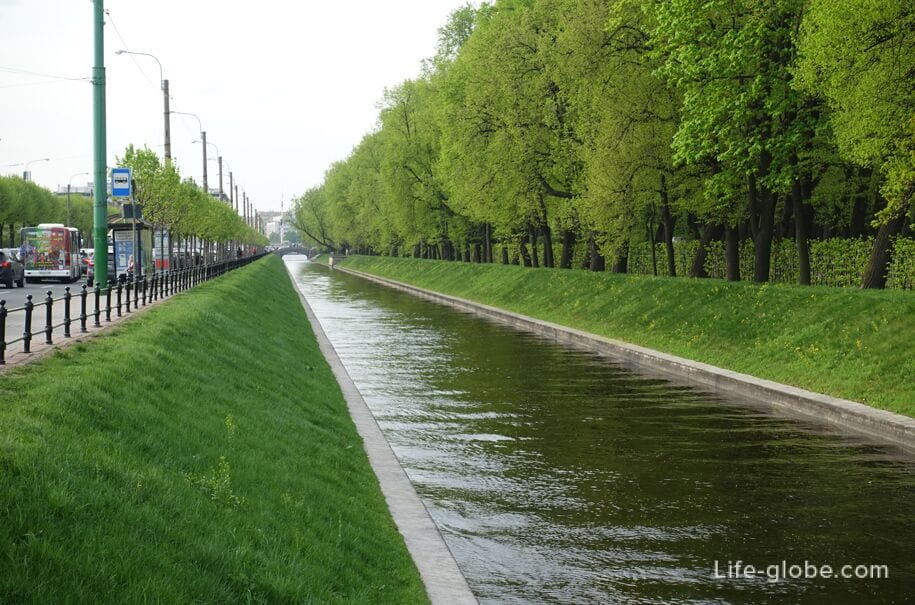
The Swan ditch is a man-made canal that was dug in 1711-1716 to drain the marshy territory of the Tsaritsyn Meadow (now the Field of Mars) and the Summer Garden. At the same time, the banks of the canal were reinforced with wooden piles and, perhaps at the same time, wooden railings were installed along the bank along the Tsaritsyn meadow.
The name "Swan" is due to the fact that in the 18th century swans from the ponds of the Summer Garden settled on the groove. But initially the channel was called Summer, after the Summer Garden located near it.
On both sides of the canal, at the Neva River (the source of the groove) and the Moika River (the mouth of the canal), there are bridges over the Swan Groove: the Upper-Swan Bridge passing along the Palace Embankment, and the Lower-Swan Bridge - along the Moika River embankment.
Both bridges connect the 1st Admiralty Island with the Summer Garden Island.
The Upper Swan Bridge is a single-span stone arch bridge with a parabolic outline of the arch in the form of a hinged arch. The bridge is faced with granite from the facades. The abutments of the bridge are massive stone rubble masonry on a pile base, lined with granite.
The fences of the bridge are a solid granite parapet adjacent to the parapets of the Palace Embankment. There are granite slabs on the sidewalks. The sidewalks are separated from the roadway by a granite curb.
The length of the bridge is 12.5 meters, and its width is 30.4 meters.
The first wooden drawbridge on this site was built in 1711-1715, immediately after the canal was dug. In 1754, the bridge was rebuilt in wood.
In 1767-1768, during the construction of the granite embankments of the Neva River, the bridge was rebuilt into a single-span arched stone bridge.
The exterior design of the bridge has been preserved to this day in its original form.
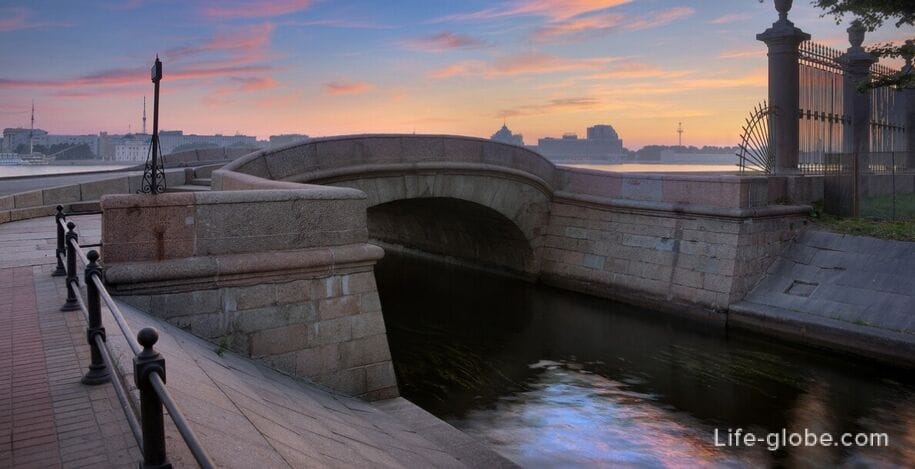
The Lower Swan Bridge is also a single-span arch bridge with a superstructure in the form of a reinforced concrete arch of a box shape, designed as an elastic arch.
The railings of the bridge are cast-iron lattices of artistic casting on cast-iron bollards, made according to a drawing attributed to the architect K. I. Rossi.
The length of the bridge is 19.55 meters, and its width is 19.85 meters.
The first wooden drawbridge on this place appeared in 1733 and was built according to the project of the Dutch master Herman van Boles.
In the late 18th and early 19th centuries, the bridge was briefly called the 1st Tsaritsyn Bridge, after the nearby Tsaritsyn Meadow. The modern name of the bridge, as well as the Upper Lebyazhy, has been known since 1849.
In 1836-1837, during the redevelopment of the area around Engineering Lock The Lower Swan Bridge was rebuilt in stone.
In the future, the bridge was repaired. In 1924-1925, according to the project of engineers B. D. Vasiliev and A. D. Salarev, the bridge was reconstructed, rebuilt into a single-span reinforced concrete arch.
The historical appearance of the Lower Swan Bridge has not changed.
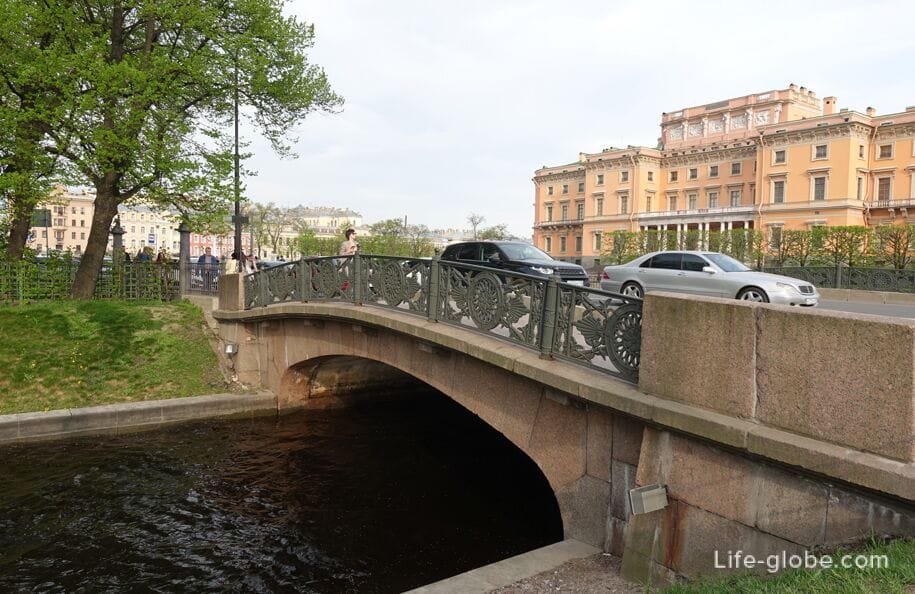
View of the Moika River, The first Garden Bridge is straight and the Lower Swan Bridge is on the right
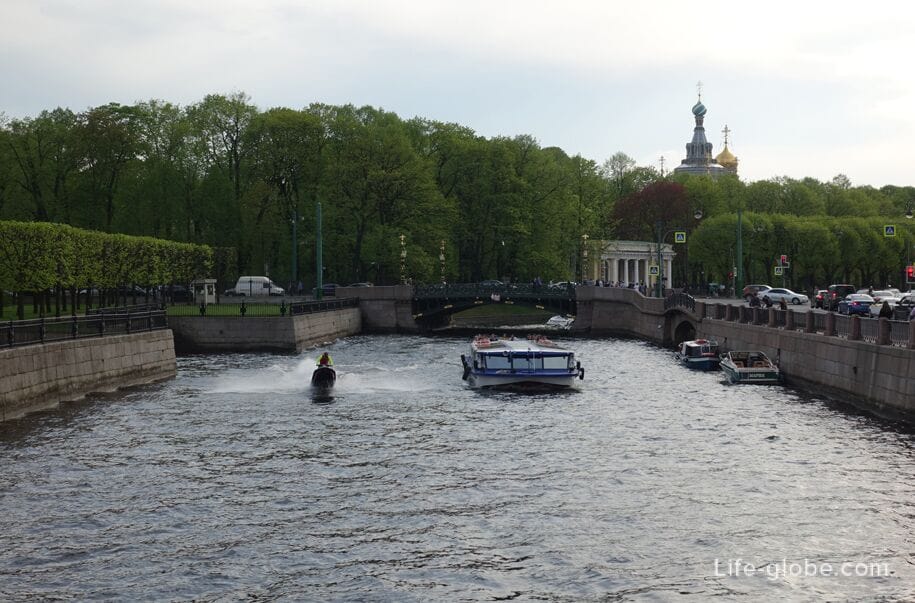
From the east (left bank), Lebyazhya Kanavka borders withThe Summer Garden, which is the oldest park and the pearl of the center of St. Petersburg, and is a park ensemble and a monument of landscape art of the first third of the 18th century.
In the Summer Garden there are: The Summer Palace of Peter I (now a museum), buildings (pavilions), alleys and paths for walking, cafes, places for recreation, a pond, a parterre, bosquets, borso, fountains, sculptures, monuments and an exposition of the history of the Summer Garden. Learn more about the Summer Garden…
A former pier - terrace for mooring boats, originally built in 1797, opens from the garden to the Swan Groove. The terrace was built of Syas limestone slab and fenced with a balustrade of Pudozhsky stone designed by architect G. Pilnyakov. In 1824, the terrace was destroyed by a flood, after which it was restored according to the project of the architect Pistsov, and the stone balusters were replaced with a cast - iron openwork lattice according to the drawing of the architect L. I. Charlemagne (according to other sources-K. I. Rossi).
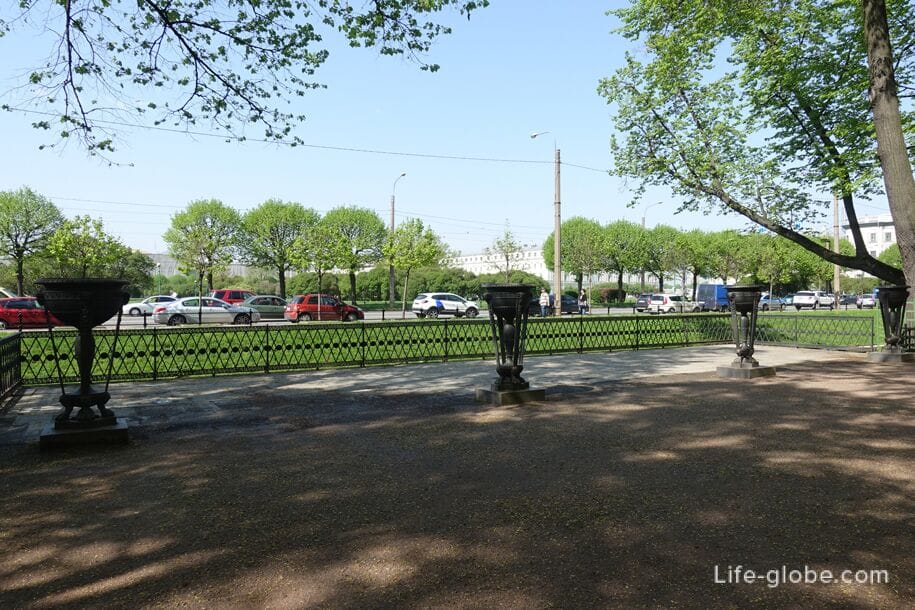
View from the former pier to the swan groove

On the western side (right bank) along the entire Lebyazhya Kanavka runs the embankment of the Lebyazhya Kanavka, consisting of a carriageway and pedestrian sidewalks on both sides of the road.
Behind the embankment stretches the Field of Mars, which is a green zone and a square in the center of which is a Monument to the fighters of the Revolution (Eternal Flame).
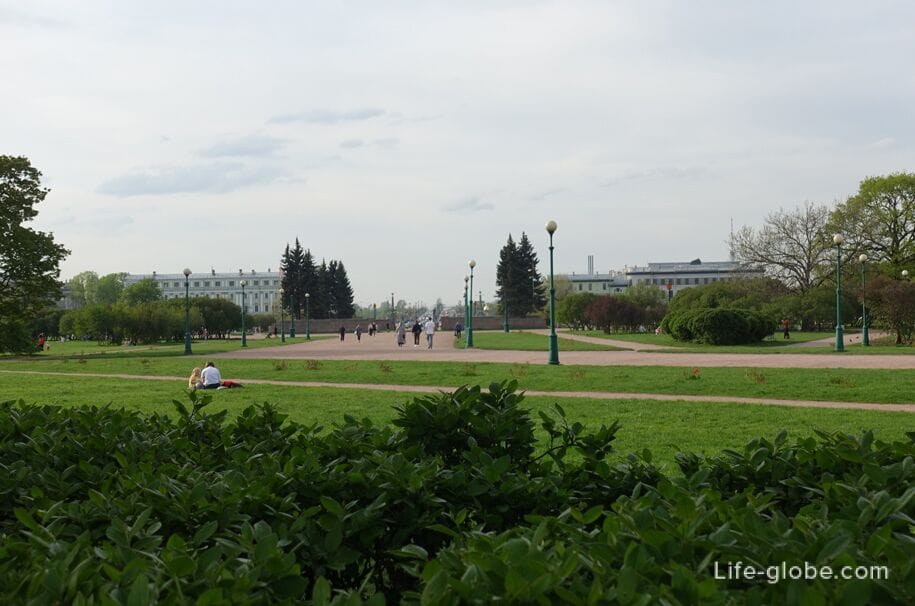
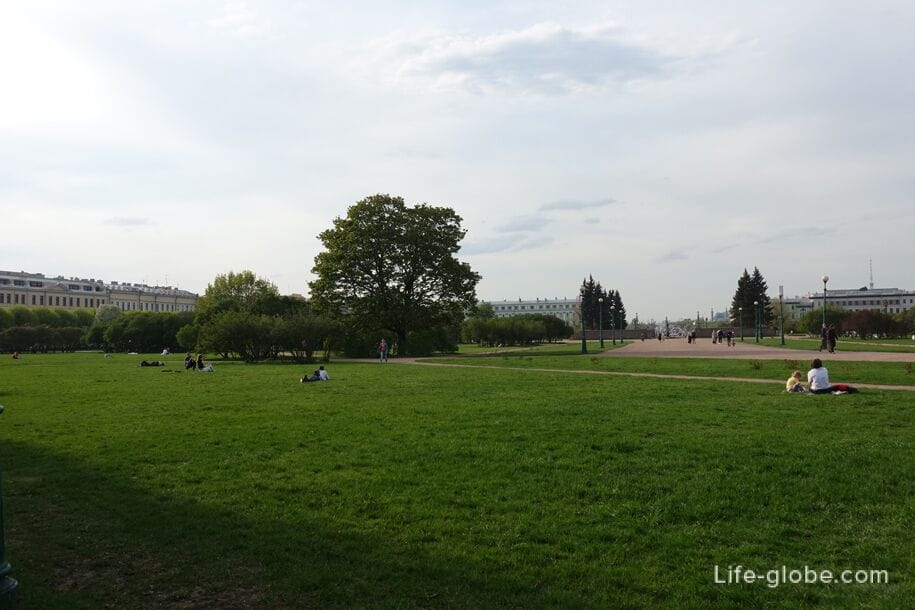
Near the Palace Embankment and the Swan Groove is the former Betsky House (now the Institute of Culture).
The building was erected at the end of the 18th century as a mansion for Ivan Ivanovich Betsky. The construction was carried out by order of Catherine II on the site of the former Opera House.
In the 19th century, the building had an add-on.
Today, the building belongs to the St. Petersburg State Institute of Culture and is connected by internal passages to the neighboring Saltykov house.
The southern facade of the house faces the Field of Mars, and the northern facade faces the Palace Embankment. More about the Palace Embankment…

Coordinates of the Swan Groove: source (Neva River) - 59°56'49.0"N 30°19'56.0" E (59.946944, 30.332222), - mouth (Moika River) - 59°56'29.0"N 30°20'10.0" E (59.941389, 30.336111).
Nearest metro stations: "Nevsky Prospekt, "Gostiny Dvor", "Admiralteiskaya" and "Chernyshevskaya".
All accommodation facilities in St. Petersburg, including in the city center and more remotely from it, can be viewed and booked here